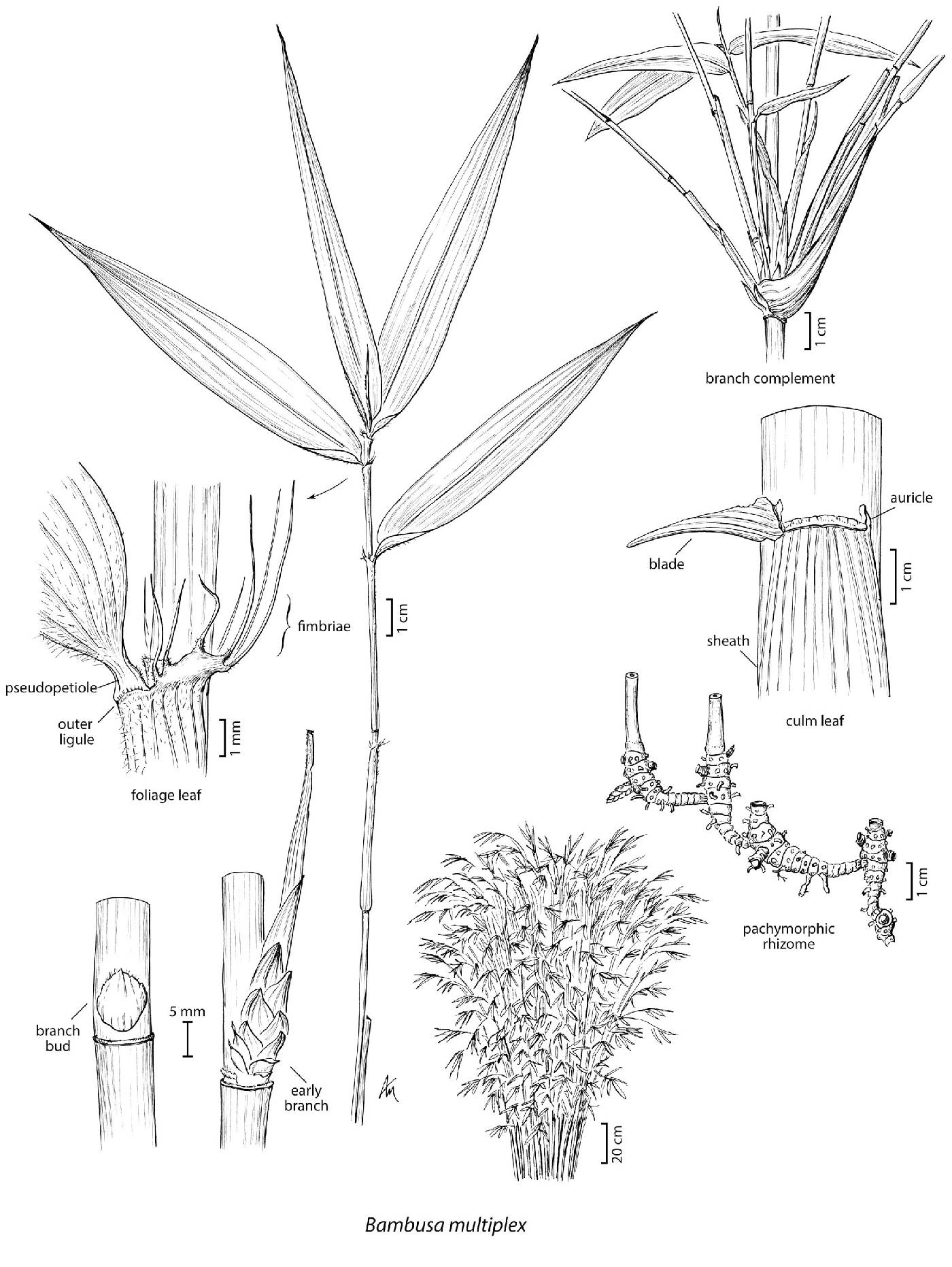|
Family: Poaceae |
C.M.A. Stapleton FNA 24: 21-25 Plants usually arborescent, in well defined or rather loose clumps; rhizomes pachymorph, with short necks. Culms 0.5–30(35) m tall, 0.5–18(20) cm thick, woody, perennial, usually self-supporting; nodes not swollen; supranodal ridges obscure; internodes terete, usually thinly covered initially with light-colored wax. Branch complements usually similar at all nodes, initally with a dominant primary central branch and 2 smaller co-dominant lateral branches, these sometimes followed rapidly by the development of branches from their proximal buds, the central and two lateral branches somewhat greater in size than those from the proximal buds; bud scales 2-keeled, thickened, initially closed at the back and front; branches all subtended by bracts, higher order branchlets at the lower nodes sometimes thornlike. Culm sheaths usually promptly deciduous, initially lightly waxy, sometimes with short, stiff hairs, subsequently losing the wax and becoming glabrous; auricles usually well developed; oral setae usually present; blades triangular to broadly triangular, usually erect. Foliage leaves: sheaths usually deciduous from the lower nodes of the branches, persistent at the distal nodes; blades to 30 cm long, to 6 cm wide, not distinctly cross veined. Inflorescences usually spicate, rarely capitate, bracteate; prophylls 2-keeled, narrow. Pseudospikelets 1–5 cm, with 3–12 florets; disarticulation above the glumes and below the florets, rapid; rachilla internodes usually long. Glumes several, subtending the buds; lemmas narrowly ovate, acute, unawned; paleas not exceeding the lemmas, 2-keeled, not winged; anthers 6; ovaries usually suboblong; styles short, with (2)3–4 plumose branches. x = 8. Name a Latinized form of bambu, a local name of Malayan origin. Bambusa is a tropical and subtropical genus of 75–100+ species. It is native to southern and southeastern Asia, but is widely cultivated and naturalized throughout the tropics. Bambusa vulgaris and Bambusa multiplex grow widely in Florida and Texas, having spread to some extent after being planted as ornamentals. Other species are known only in cultivation. The American Bamboo Society lists over 40 species as being commercially available in North America in 2005.
|


